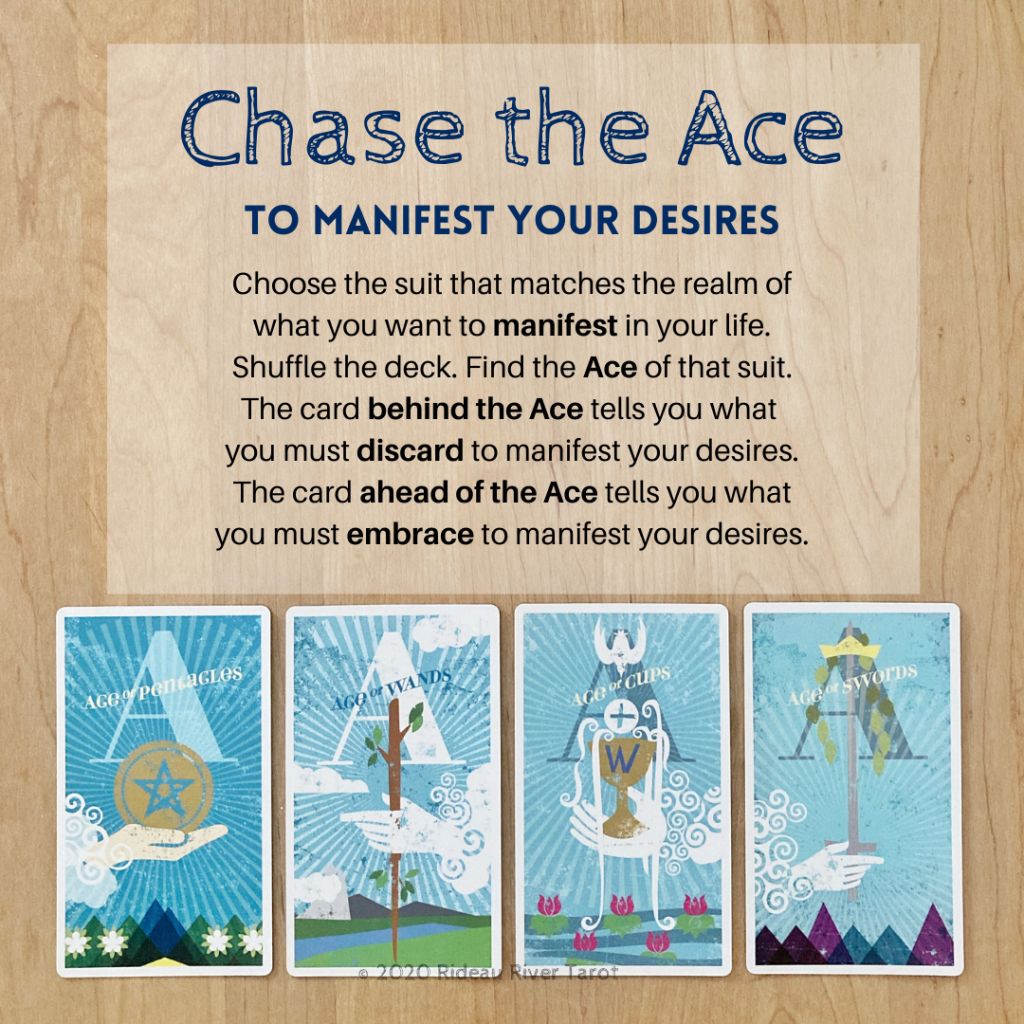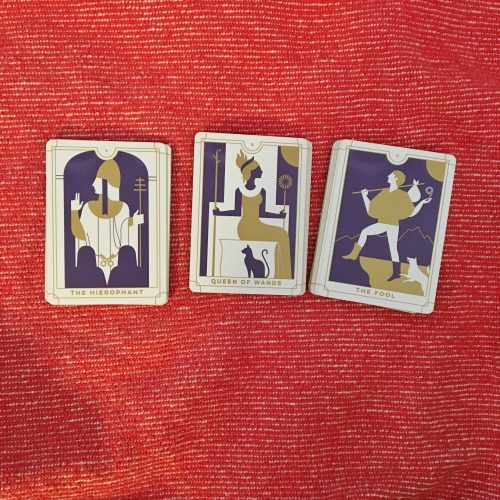In my personal tarot practice, I don’t use the cards for prediction. Instead, when consulting them about an issue or situation where I feel I need some insight, I use them to challenge my attitudes and beliefs, to reframe my thinking, and to find alternate ways of looking at a situation.
Here’s a good example of how to reframe a query from a prediction to a source of insight. A seeker asked me to do a reading about a situation she was facing. Let’s call her Meg. Meg’s daughter wanted to accept an opportunity that had a great potential for growth, but also had many significant risks. Meg was very worried about her daughter and though she trusted her daughter’s instincts, she could not overcome her own misgivings about the situation. She asked whether a tarot reading might alleviate her worries and fears, turning the unknown into the known.
I explained that I was not comfortable asking “What will happen to Meg’s daughter in the situation she is facing?” because I don’t subscribe to tarot having the ability to predict future events. However, I could do a reading about Meg’s thoughts and fears, and maybe offer Meg a new way of looking at the situation, and Meg agreed.
I shuffled the cards, thinking about Meg and Meg’s daughter, and asking what insight the cards might offer a mother worrying about her child. I pulled the Queen of Wands, the Nine of Swords, and the Five of Cups, and I smiled.
In this reading, the Queen of Wands is Meg’s daughter – charismatic, energetic, a whirlwind of adventure-seeking energy waiting to explode into the world. That Nine of Swords is the classic avatar of anxiety and is clearly the worry that is keeping Meg up at night. But often, I see the Nine of Swords as meaning that the fear of the thing is more of an issue than the thing itself; it is an exaggeration, a caricature. It speaks to fear that has gotten out of control and out of proportion to the threat. And the Five of Cups is interesting – my first thought was regrets, as in “don’t do something you might regret.” But then I started thinking about the deeper meaning of the card and suspected instead it might signify focusing on the negative aspects of a situation instead of the positive ones. On the card, the figure laments the loss of the spilled cups without noticing the remaining full cups – is the glass half empty or half full? Like the Nine of Swords, this is a card that asks you to consider your reactions to a situation, and whether they are making the situation worse than it has to be.
So while consulting the tarot has not given Meg a concrete answer on what will happen if her daughter accepts this exciting new opportunity, it has reminded Meg that life is full of risks, and if we let our fear of those risks stand in our way, we have much to lose. There is, of course, a sensible place for worry, but given the fiery, adventure-seeking nature of her daughter’s personality, Meg will have to learn to balance her natural maternal concern and protective instincts with her daughter’s need to experience all of life’s ups and downs on her own. Meg is reminded that while she can’t control the circumstances of her daughter’s opportunity, she can control how she reacts to the situation. She needs to evaluate whether her anxiety is reasonable or out of proportion to the true risks inherent in the situation. I don’t know the answer to that last question, but Meg admitted that she does have a penchant for overthinking things, and will use the Nine of Swords as a reminder to not let her imagination run to the worst possible outcome and stay there.






